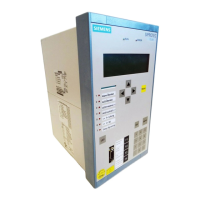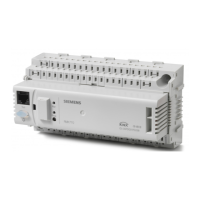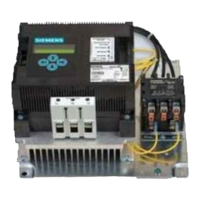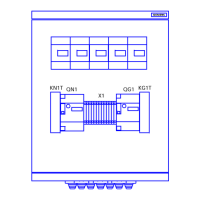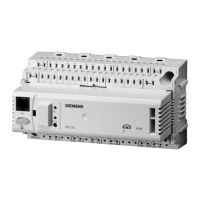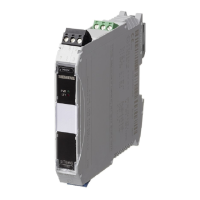(1) Description of Operation 7SR224
©2009 Siemens Protection Devices Limited Page 65 of 66
79 Trip & Lockout
Hotline Work In/Out
E/F In/Out
SEF In/Out
Instantaneous Protection In/Out
Battery Test Required
6.8 REAL TIME CLOCK
Time and date can be set either via the relay fascia using appropriate commands in the System Config
menu, via the data comms channel(s) or via the optional IRIG-B input. Time and date are maintained
while the relay is de-energised by a back up storage capacitor.
The default date is set at 01/01/2000 deliberately to indicate the date has not yet been set. When
editing the Time, only the hours and minutes can be edited. When the user presses ENTER after
editing the seconds are zeroed and the clock begins running.
6.8.1 Time Synchronisation - IEC 60870-5-103 & DNP3.0
Where the data comms channel(s) is connected the relay can be directly time synchronised to the
nearest second or minute using the IEC 60870-5-103 & DNP3.0 global time synchronisation. This can
be from a dedicated substation automation system or from ‘Reydisp Evolution’ communications
support software.
6.8.2 Time Synchronisation – Binary Input
A binary input can be mapped Clock Sync from BI. The seconds or minutes will be rounded up or
down to the nearest value when the BI is energised. This input is leading edge triggered.
6.8.3 Time Synchronisation – IRIG-B (Optional)
A BNC connector on the relay rear provides an isolated IRIG-B time synchronisation port. The IRIG-B
input expects a modulated 3-6 Volt signal and provides time synchronisation to the nearest
millisecond.
6.9 SETTINGS GROUPS
The relay provides eight groups of settings – Group number (Gn) 1 to 8. At any one time only one
group of settings can be ‘active’ – SYSTEM CONFIG>Active Group setting.
It is possible to edit one group while the relay operates in accordance with settings from another
‘active’ group using the View/Edit Group setting.
Some settings are independent of the active group setting i.e. they apply to all settings groups. This is
indicated on the top line of the relay LCD – where only the Active Group No. is identified. Where
settings are group dependent this is indicated on the top line of the LCD by both the Active Group
No. and the View Group No. being displayed.
A change of settings group can be achieved either locally at the relay fascia, remotely over the data
comms channel(s) or via a binary input. When using a binary input an alternative settings group is
selected only whilst the input is energised (Select Grp Mode: Level triggered) or latches into the
selected group after energisation of the input (Select Grp Mode: Edge triggered).
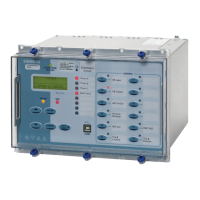
